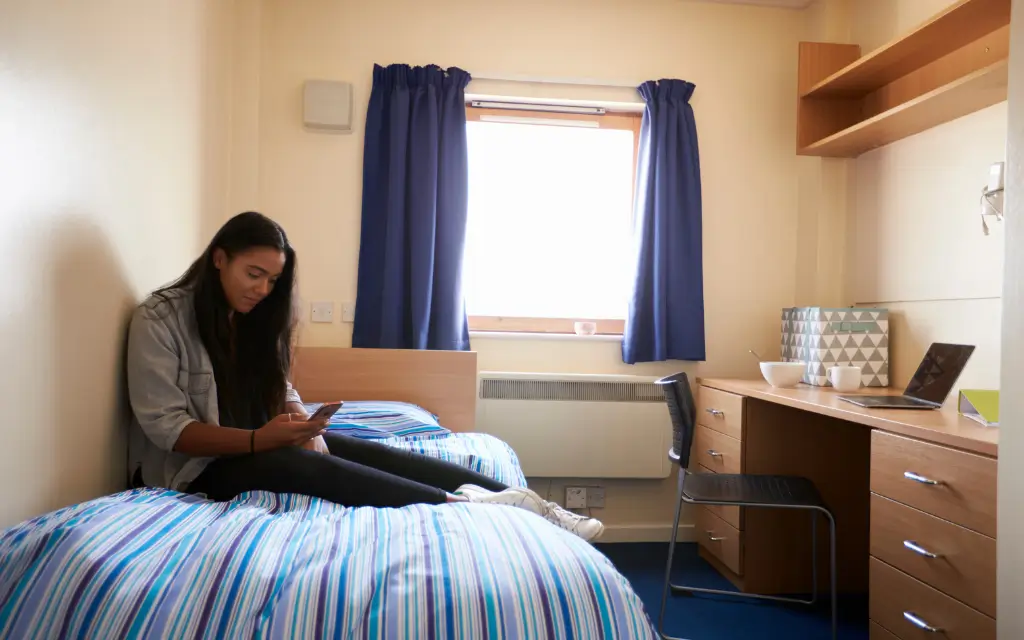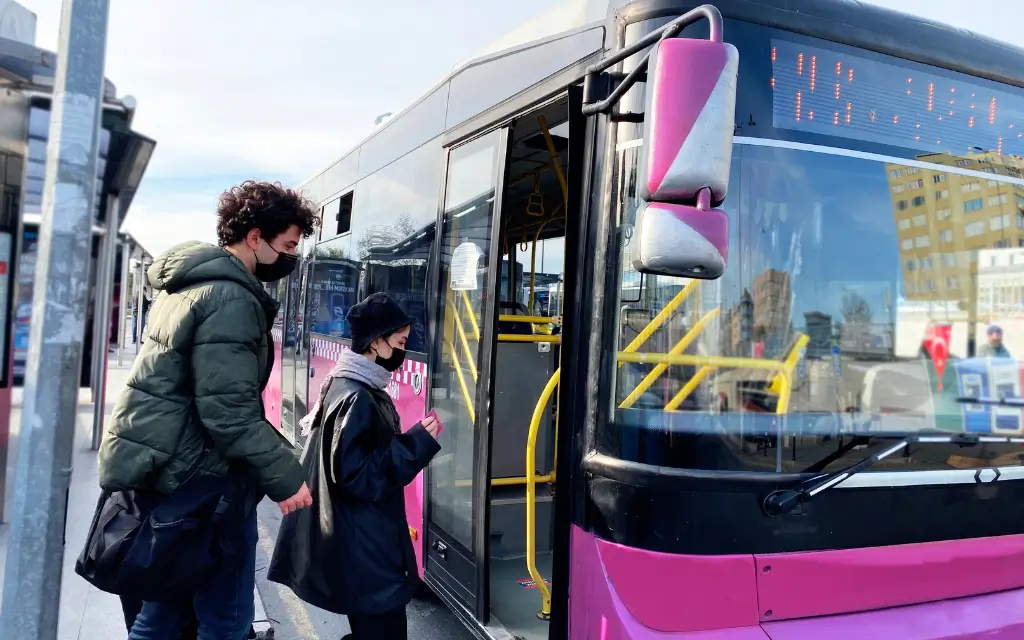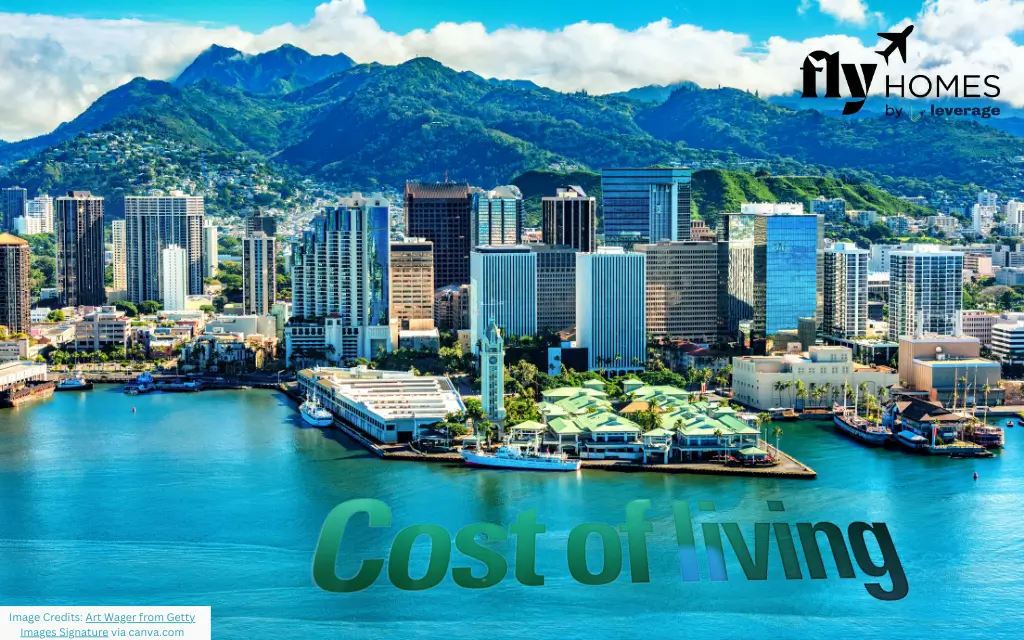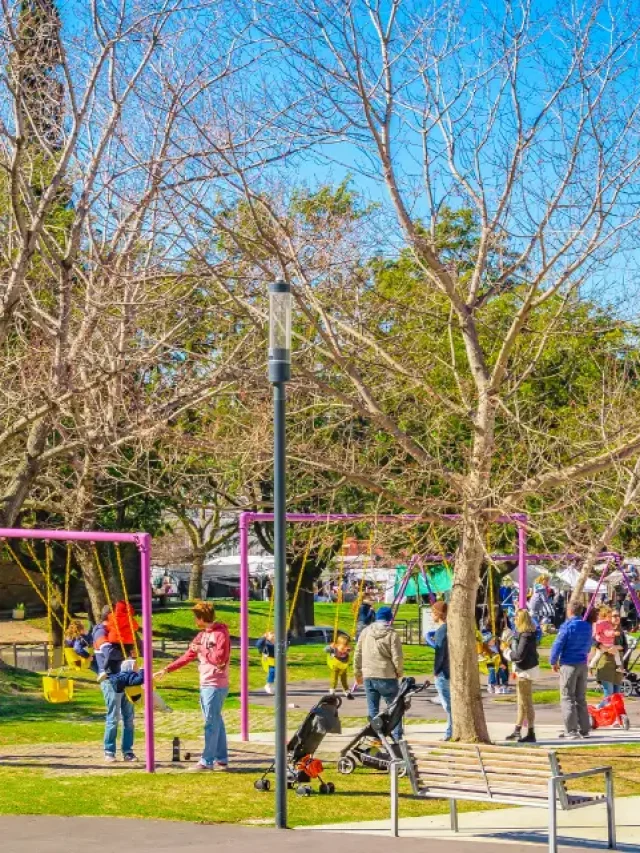For students, managing the cost of living in Hawaii in 2025 can be particularly challenging, as Hawaii is widely known for being one of the most expensive states to live in across the United States. Moreover, fluctuations in currency values can initially complicate expense management for international students.
By thoroughly understanding key costs of living in Hawaii such as housing, food, transportation, and utilities students can create more effective budgets. This blog is designed to assist you in navigating the cost of living in Hawaii by examining various aspects of student expenditures. Let’s explore the primary costs without further delay!
Overview of the Cost of Living in Hawaii
The monthly cost of living in Hawaii for an individual is approximately USD 2,875, which includes essential expenses such as food, housing, and other necessities, as reported by LivingCost. This figure indicates that living in Hawaii is about 1.3 times more expensive than the national average in the United States. However, actual expenses can vary for students and residents based on factors like location, lifestyle choices, and personal spending habits.
Below is a breakdown of the average monthly living costs in Hawaii for an international student or an individual, providing valuable insights to help you plan your budget effectively.
| Expense Category | Average Monthly Cost |
| Cost of Living with Rent | USD 2,875 |
| 1 bedroom Rent | USD 1,834 to USD 1,526 |
| Utilities | USD 146 |
| Food | USD 776 |
| Transport | USD 366 |
Also Read:
Accommodation Costs in Hawaii
When planning to live in Hawaii as a student, one of the most significant factors to consider is the cost of living in Hawaii, particularly accommodation costs. Whether opting for on-campus dorms or off-campus apartments, accommodation costs can vary based on location, amenities, and the type of student accommodation in the USA.

On-campus dorms typically range from USD 6,500 to USD 10,500 per semester, depending on the room type and level of privacy. The cost varies for single or shared rooms and the shared amenities available. Below is a table outlining the approximate off-campus cost of accommodation students might encounter in Hawaii.
| Accommodation Type | Approx. Cost |
| 1 bedroom apartment in city center | USD 1,526 |
| Cheap 1 bedroom apartment | USD 1,834 |
Costs of Utilities in Hawaii
Utilities in Hawaii are among the most expensive in the United States, largely due to the state’s dependence on imported fuel and the need for air conditioning in its tropical climate. It’s crucial to consider these utility expenses when calculating your cost of living in Hawaii as it can significantly impact the living expenses budget. Below is a table outlining the approximate utility costs per student in Hawaii.
| Utility Type | Cost |
| Utility bill i.e., electricity, heating, water, etc. for one person. | USD 184 |
| Internet plan for 50 Mbps+ speed and 1-month unlimited plan. | USD 67.3 |
Costs of Dining in Hawaii
Dining in Hawaii can be costly, but there are ways to enjoy the local cuisine without overspending. The price of meals varies throughout the day, with breakfast typically being the least expensive, followed by lunch, and dinner usually costing more.

The cost of dining out in Hawaii can vary widely depending on the type of restaurant, cuisine, and location. For students, frequent dining at restaurants can significantly influence their overall cost of living in Hawaii. Below is an approximate breakdown of meal expenses across different dining establishments:
| Type of Restaurant | Approx. Cost of Meal |
| Menu for Lunch | USD 19.3 |
| Dinner for Two person in a Restaurant | USD 76.8 |
| Fast Food Meal in McDonald’s | USD 13.3 |
| Cappuccino | USD 6.59 |
What you order is an important factor to consider, imported goods are more expensive due to shipping costs, while local produce and seafood are often more affordable and offer a taste of the island’s natural bounty.
Costs of Groceries in Hawaii
Grocery prices in Hawaii are notably higher than the national average, with some estimates suggesting that they are 57% more expensive than those on the mainland, positioning Hawaii as one of the priciest states for groceries. Grocery expenses play a crucial role in the overall cost of living in Hawaii, significantly affecting a student’s financial planning.
To effectively manage grocery costs in Hawaii, it is advisable to compare prices at various supermarkets and local markets. Below is an overview of typical grocery expenses for those who intend to prepare meals at home:
| Item | Quantity | Approx Cost |
| Milk | 1 L | USD 1.86 |
| Water | 1 L | USD 1.82 |
| Apples | 1 kg | USD 6.29 |
| Banana | 1 kg | USD 3.31 |
| Oranges | 1 kg | USD 5.69 |
| Tomato | 1 kg | USD 4.72 |
| Potato | 1 kg | USD 4.24 |
| Onion | 1 kg | USD 2.81 |
| Bread | 0.5 kg | USD 6.48 |
| Rice | 1 kg | USD 6.19 |
| Eggs | x12 | USD 6.60 |
| Cheese | 1 kg | USD 21.50 |
Transportation Cost in Hawaii
Transportation in Hawaii is affordable and diverse, with options like TheBus and Skyline rail offering convenient travel at reasonable fares. TheHandi-Van provides wheelchair-accessible service, while Biki Bikes offers bike-sharing stations for a more active commute. Students can save with discounted bus passes, making commuting both accessible and budget-friendly.

Choosing local transportation in Hawaii is an effective strategy to lower your overall living expenses in Hawaii. Here’s a summary of typical transportation costs in Hawaii to assist you in planning your travel budget:
| Transportation in Hawaii | Average Cost |
| Local transport ticket | USD 3.1 |
| Monthly transport ticket | USD 77.9 |
| Taxi ride (8 km) | USD 23.3 |
| Gas/petrol (1 L) | USD 1.26 |
Miscellaneous Costs in Hawaii
Hawaii is known for its beautiful landscapes and vibrant culture, but it is also one of the most expensive states to live in. As a result, even seemingly small miscellaneous expenses can add up quickly. For students it’s important to budget for everyday costs that go beyond rent and utilities.
The miscellaneous costs can affect your cost of living in Hawaii. By planning ahead, you can better manage these additional expenses and enjoy your time in paradise without financial stress. Below is a table showing common miscellaneous costs in Hawaii.
| Miscellaneous | Approx Cost |
| Movie Ticket | USD 14.6 |
| Gym Membership | USD 46.3 Per month |
| Brand Jeans | USD 51.5 |
| Brand Sneakers | USD 97.1 |
| Doctor’s visit | USD 146 |
Cost of Studying in Hawaii
Studying in Hawaii, particularly at its universities, can be a significant financial investment. The cost of education varies depending on residency status, with out-of-state students facing higher expenses than in-state students.
Additionally, the cost of studying in Hawaii is an important factor to consider, as it can significantly affect the overall cost of living in Hawaii. Here’s an overview of the costs involved in pursuing a degree in Hawaii:
Total Cost for a Four-Year Degree
- In-State Students: Over the course of a four-year degree, in-state students can expect to pay around USD 121,324.
- Out-of-State Students: Out-of-state students face a significantly higher total cost of approximately USD 209,452 for a four-year degree.
An essential factor to consider is residency status, which significantly affects tuition rates. In-state students enjoy a much lower cost, making establishing residency in Hawaii an important consideration for long-term students.
Cost of Healthcare & Insurance in Hawaii
Several factors influence the cost of health insurance for international students in Hawaii. The length of your study program and the level of coverage you require can significantly affect the price of your annual insurance plan. On average, health insurance in Hawaii ranges from USD 500 to USD 1,000 per year.
Hawaii operates a federally managed health insurance marketplace, allowing residents to enroll through HealthCare.gov.
Cost of Living in Hawaii vs Other U.S States
When comparing the cost of living in Hawaii to other states in the U.S., Hawaii consistently ranks as one of the most expensive places to live.Its unique geographic location, reliance on imported goods, and high housing costs drive up expenses significantly.
The comparison of monthly expenses in Hawaii and compares them to other states, helping you understand the financial differences and make informed decisions. Let’s examine how the cost of living in Hawaii stacks up against other regions:
- Cost of living in Hawaii vs Florida: The average monthly cost of living in Florida is USD 2,518 per person, lower than Hawaii’s USD 2,875.
- Cost of living in Hawaii vs California: The average monthly cost of living in California is USD 2,918 per person, still similar to Hawaii’s.
- Cost of living in Hawaii vs Texas: The average monthly cost of living in Texas is USD 2,141 per person, significantly lower than Hawaii’s.
- Cost of living in Hawaii vs Seattle, WA: The average monthly cost of living in Seattle is USD 2,908 per person, yet Hawaii remains more expensive.
- Cost of living in Hawaii vs Utah: The average monthly cost of living in Utah is USD 2,004 per person, less than Hawaii’s expenses.
- Cost of living in Hawaii vs New York: The average monthly cost of living in New York is USD 3,294 per person, slightly higher than Hawaii’s.
- Cost of living in Hawaii vs Virginia: The average monthly cost of living in Virginia is USD 2,371 per person, far lower than Hawaii’s.
- Cost of living in Hawaii vs Ohio: The average monthly cost of living in Ohio is USD 1,914 per person, making it far more affordable than Hawaii’s.
- Cost of living in Hawaii vs Washington State: The average monthly cost of living in Washington State is USD 2,551 per person, much lower than Hawaii’s.
How to Manage Cost of Living in Hawaii for Students
Living in Hawaii as a student can be challenging due to the high cost of living in Hawaii, but with careful planning and smart strategies, it’s possible to make it more manageable. Here are some effective tips to help you control your expenses and thrive in Hawaii as a student:
Choose Affordable Housing Options
- On-Campus Housing: Opt for on-campus accommodations, which are often cheaper and more convenient than renting off-campus apartments.
- Roommates: Share an apartment with roommates to split rent and utility costs.
- Student Discounts: Look for housing communities or landlords that offer discounts to students to help reduce the cost of living in Hawaii.
Save on Food and Groceries
- Cook at Home: Eating out in Hawaii can be expensive. Cook meals at home using affordable local ingredients.
- Farmers’ Markets: Shop at local farmers’ markets for fresh produce at lower prices.
- Student Meal Plans: If available, enroll in a campus meal plan for budget-friendly dining options.
Use Public Transportation
- Bus Passes: Take advantage of discounted student bus passes for affordable transportation. Public transit can significantly lower the cost of living in Hawaii for students.
- Biking or Walking: If you live near your campus, consider walking or biking to save on travel costs.
Find Part-Time Work
- On-Campus Jobs: Many universities in Hawaii offer on-campus jobs, such as library assistants or research positions, which can help you earn extra income while accommodating your class schedule.
- Freelance or Gig Work: Consider remote freelancing or gig work to supplement your income and offset the cost of living in Hawaii.
Take Advantage of Student Discounts
- Local Discounts: Many businesses in Hawaii, including restaurants and entertainment venues, offer student discounts. Always carry your student ID to access these deals.
- Software and Tools: Use free or discounted software, textbooks, and other resources provided by your institution.
Budget Smartly
- Track Expenses: Use budgeting apps to monitor your spending and identify areas to cut back.
- Prioritize Needs Over Wants: Focus on essential expenses like rent, food, and tuition while limiting discretionary spending to control the cost of living in Hawaii.
Utilize Financial Aid and Scholarships
- Apply for Scholarships: Research scholarships specific to Hawaii or your field of study to reduce tuition costs.
- Financial Aid: Check if you qualify for federal or state financial aid programs to offset expenses and better manage the cost of living in Hawaii.
By implementing these strategies, students can effectively manage the cost of living in Hawaii and focus on their academic journey without unnecessary financial stress.
By following these tips, you can effectively manage your cost of living in Hawaii and maintain a comfortable lifestyle while keeping your finances in check. For booking the best student accommodation abroad to start your study abroad experience you can contact Fly Homes at 1800572118.
Also Read:
FAQS on Cost of Living in Hawaii
The typical monthly cost of living in Hawaii for a student is around USD 2,875. This amount encompasses essential expenses such as food, housing, and utilities. However, actual living costs can differ significantly based on individual lifestyle choices, geographical location, and personal spending habits.
For international students, the average living expenses in Hawaii hover around USD 2,875 per month, making it approximately 1.3 times more costly than the national average in the United States. Despite the higher costs, Hawaii provides a unique and enriching lifestyle for students.
To maintain a comfortable lifestyle in Hawaii, a student should budget about USD 2,875 monthly. This figure includes rent, food, and other necessary expenses, reflecting the overall cost of living in Hawaii for an individual in the area.
Hawaii is generally perceived as an expensive place for students to reside. The average monthly cost for a single person is roughly USD 2,875 (including rent), which exceeds the national average in the United States.
Renting off-campus in Hawaii can range from USD 1,526 to USD 1,834 for a one-bedroom apartment, depending on the specific location. Typically, living in city centers incurs higher costs compared to suburban areas, affecting the overall living expenses in Hawaii.
Students can expect to pay about USD 184 monthly for utilities such as electricity, water, and gas. Additionally, internet services may cost around USD 67.30 for a connection speed of 50 Mbps or higher, contributing to the total cost of living in Hawaii.
The average monthly expenditure on food in Hawaii is approximately USD 753. This amount can vary based on dining habits whether one frequently eats out or prefers home-cooked meals which directly impacts students’ overall cost of living in Hawaii.
A one-way public transportation ticket in Hawaii costs around USD 3.00. For those using local transport regularly, a monthly pass is priced at about USD 77.00. Taxi fares are approximately USD 23.00 for an 8 km ride, helping manage transportation expenses.
Dining prices in Hawaii fluctuate depending on the restaurant; however, lunch typically costs around USD 19.30 while dinner for two averages about USD 76.80. Fast-food meals are priced at approximately USD 13.30 and should be included when calculating living expenses.
Miscellaneous costs such as movie tickets (USD 14.60), gym memberships (USD 46.30), and doctor’s visits (USD 146) should be factored into your monthly budget when assessing the overall cost of living in Hawaii.
Follow Us on Social Media




























